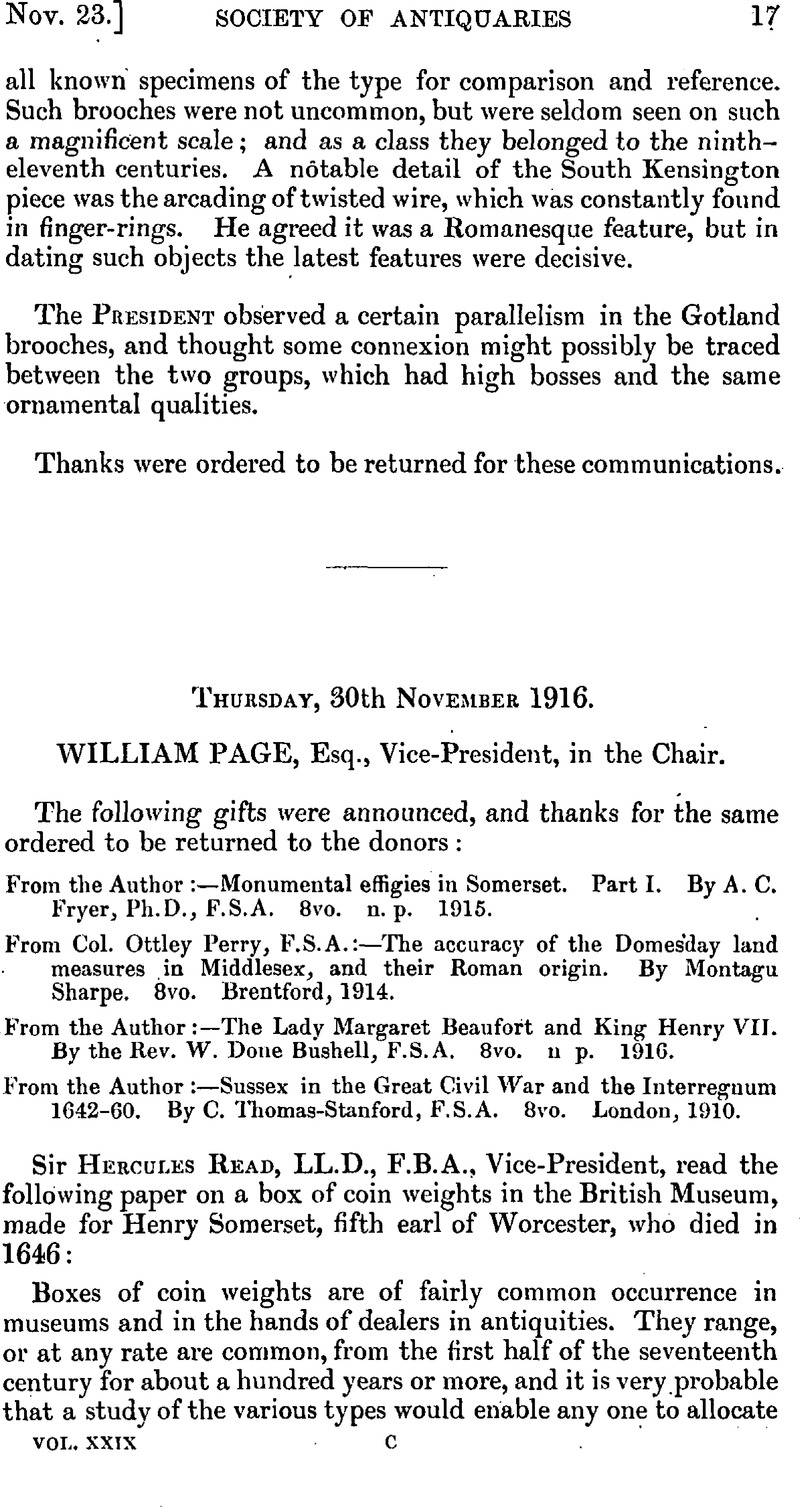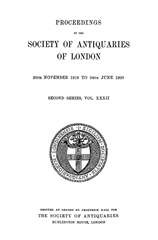No CrossRef data available.
Article contents
Thursday, 30th November 1916
Published online by Cambridge University Press: 10 May 2010
Abstract

- Type
- Proceedings
- Information
- Copyright
- Copyright © The Society of Antiquaries of London 1917
References
page 18 note 1 Coin Weights, by Lawrence, L. A., in The British Numismatic Journal, vol. vi, 1910.Google Scholar
page 21 note 1 Dircks, Henry, Worcesteriana, London, 1866.Google Scholar
page 22 note 1 Edition 1849, vol. ii, bk. 6.
page 26 note 1 Essex Institute Bulletin, vol. xxvi (Salem, Mass., U.S.A.).
page 27 note 1 Prof.Brinton, , in Bulletin of Science and Art Museum (Philadelphia), 1897, vol. i, no. 1, p. 10Google Scholar, identifies it with the Myrmex worn by pugilists (cf. Internationales Archiv für Ethnographie, x. 265).
page 28 note 1 Reproduced in Daremberg and Saglio's Dictionnaire, s.v. ‘Frenum’, figs. 3285, 3286.
page 30 note 1 Early Iron Age Guide (British Museum), fig. 128.
page 31 note 1 Early Iron Age Guide, fig. 109.
page 32 note 1 Fornvünnen, 1907, p. 294 ; 1909, p. 246 ; 1910, p. 277, fig. 84 ; 1911, 266, fig. 111 ; 1912, 184, figs. 21–5.
page 33 note 1 Nya bidrag till Södermannlands förhistoria, in Bidrag till Söermannlands äldre Kulturhistoria, published by the local Fornminnesförening (1915, p. 30, figs. 51–60).
page 34 note 1 Its shape and position with regard to the bridle remained much the same after its original use had been forgotten : a similar survival in horse-harness is the diminutive saddle retained on the pad.
page 37 note 1 There is no proof that a ‘bow-puller’ has ever been found in Britain. One is illustrated in Archaeological Journal, ix, 115, but no locality is given.
page 38 note 1 As stated by Dr. Morse (op. cit. 157).
page 38 note 2 Figured by Dr. Morse, op. cit., figs. 9, 11. The goad, though mounted on a stick, would serve the same purpose : for specimens, see Pitt-Rivers, Excavations, etc., i, pi. xxix, fig. 10 ; ii, pi. CV; figs. 10–12 ; iii, pl. clxxxiii, figs. 17–19.
page 39 note 1 Priapus of the farm and garden, identified with the old Italian deity Mutunus, is another illustration of the same idea.
page 40 note 1 Stephani, Compte-rendu de la Commission archéologique de St. Pétersbourg, 1876, 132, 133.
page 40 note 2 As those quoted by himself: Xenophon, Hipp. x, 6; Pollux, Onomasticon, lib. i, cap. xi, sec. 184 (p. 116 of 1706 edition) (⋯χῖνοι τφ⋯ογιι ο⋯ς μησ⋯ται ⋯ ἵππος).


